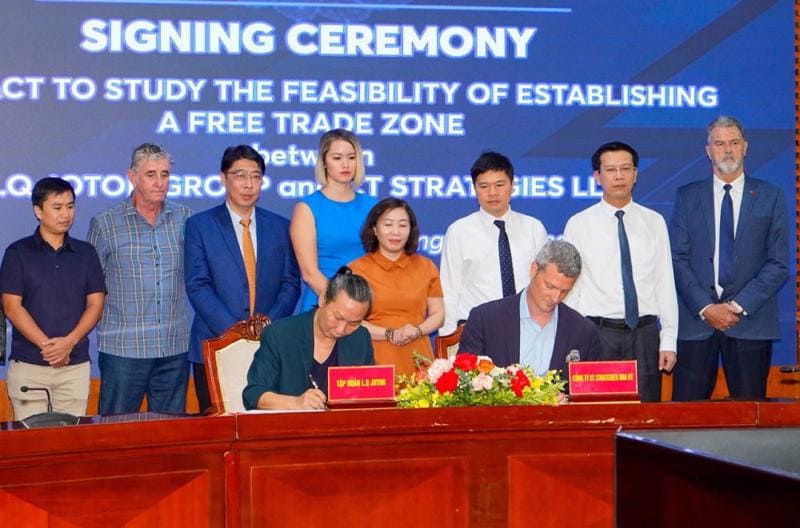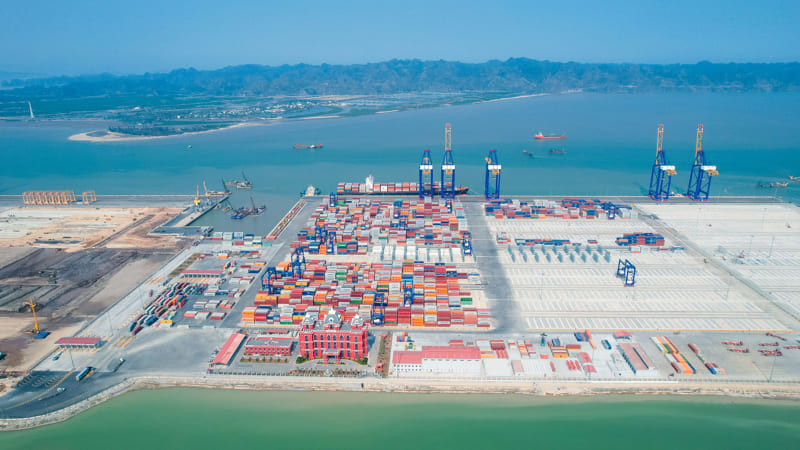On June 27, 2025, the National Assembly of Vietnam officially passed Resolution No. 226/2025/QH15, approving the establishment of a Free Trade Zone (FTZ) in Hai Phong City. This marks a pivotal step in the country’s strategy to modernize economic governance, integrate with global trade networks, and attract high-quality investment. Spanning over 6,300 hectares with a series of unprecedented incentives, Hai Phong’s FTZ is expected to become a multifunctional trade and logistics hub of regional importance—setting the stage for Vietnam to approach the standards of dynamic and open economies.

Strategic Context and Policy Rationale
In recent years, Vietnam has faced mounting pressure to upgrade its growth model, enhance regional competitiveness, and draw capital from reputable international investors. This reality calls for the creation of flexible, high-performing institutional models beyond the conventional administrative framework.
Free trade zones—proven successful in jurisdictions such as Singapore (Changi FTZ), the UAE (Jebel Ali), and China (Shanghai FTZ)—represent a “soft special zone” approach. These models avoid the political and legal complexity of formal special economic zones, yet still offer comprehensive ecosystems for investment, manufacturing, logistics, and finance with globally competitive regulations.
With its geographic advantage, a deep-water port (Lach Huyen), and strategic access to key East Asian trade routes, Hai Phong emerges as the most suitable pilot location for Vietnam’s first large-scale FTZ.
Development Model: Three Pillars, One Vision
Hai Phong’s FTZ is designed as an integrated ecosystem based on three interlinked pillars: advanced manufacturing, modern logistics, and international trade-finance services.
First, it will prioritize high-tech industries such as electronics, biotech, new materials, automation, and precision engineering. Research and development (R&D) centers are encouraged, especially in partnership with global corporations.
Second, the FTZ will leverage its proximity to Lach Huyen Port to become a regional logistics powerhouse. It will include bonded zones, international distribution centers, and dry ports, allowing seamless operations for re-export, cross-docking, and transshipment.
Third, the zone will incorporate a modern commercial district offering financial services, maritime insurance, cross-border payment infrastructure, and a centralized licensing system—creating a “one-stop-shop” environment for investors and operators.

Groundbreaking Incentives Beyond Existing Legal Frameworks
What sets Hai Phong’s FTZ apart is a range of incentives that go beyond the limits of Vietnam’s current legal framework, designed to attract global capital and top-tier talent.
Corporate income tax (CIT) for priority sectors (e.g., high-tech and R&D) is set at 10% for up to 30 years, with a 4-year tax holiday and a 50% reduction over the following nine years. For other projects within the FTZ, the 10% CIT rate is granted for 15 years with similar exemptions.
In terms of personal income tax (PIT), foreign experts, scientists, and skilled workers can enjoy a 50% PIT reduction for up to 10 years. Work permit procedures are streamlined, with flexible intra-zone mobility that doesn’t require restarting the application process.
On land and infrastructure, companies will benefit from free land use fees for the first 15 years, long-term leases up to 70 years, and exemption from land bidding requirements for eligible investors.
Regarding finance and currency, the FTZ allows transactions in freely convertible foreign currencies within its territory, unrestricted profit remittance for lawful transactions, and enables foreign banks to open branches without the need to partner with Vietnamese entities.
Immigration policies are equally progressive: long-term visas (5–10 years) will be granted to investors and foreign professionals, along with fast-track electronic visas for international partners attending site visits, negotiations, or business development activities.
Modern Governance and Deep Decentralization
Hai Phong’s FTZ will operate under a decentralized, modern governance model. The Hai Phong People’s Committee will serve as the single authority responsible for investment approvals, business registration, licensing, customs coordination, and labor management.
The zone will implement a fully digital one-stop-shop system, streamlining procedures across taxation, customs, certificates of origin, and work permits. Advanced technologies such as artificial intelligence (AI) will be applied to monitor capital flows, manage risks, and detect potential illicit activities.
The FTZ will also function as a legal and regulatory sandbox for experimenting with innovative financial services and digital tools—including smart contracts, AI-driven logistics platforms, and blockchain-based insurance solutions.

Strategic Impact: Repositioning Hai Phong and Vietnam
With GRDP growth of 11.01% in 2024 (ranking third nationally), Hai Phong already plays a leading economic role. The FTZ is projected to raise annual GRDP by an additional 2–3%, generate tens of thousands of high-quality jobs, and stimulate auxiliary supply chains in nearby provinces.
More importantly, the zone is expected to become a magnet for multinational corporations in sectors like smart manufacturing, digital logistics, and cross-border services. It also enhances Vietnam’s attractiveness as a global supply chain node amid shifting patterns of trade and investment post-COVID.
Institutionally, the FTZ sets a powerful precedent. It pilots a paperless administration model, raises the standards of investment facilitation, and puts constructive pressure on other provinces to modernize their own procedures—thus improving Vietnam’s overall business environment.
Geopolitically, the FTZ will help Vietnam integrate more deeply into international trade and financial networks, moving closer to global players like Singapore, Busan, and Dubai. This diversification reduces the country’s dependence on traditional markets and enhances its resilience in a rapidly evolving economic order.
Bold Policy, Historic Opportunity
The decision to establish a Free Trade Zone in Hai Phong marks a bold leap forward in Vietnam’s institutional reform agenda. It reflects a willingness to think big, act decisively, and pursue the country’s long-term development goals through open, competitive, and investor-friendly frameworks.
However, incentives alone won’t guarantee success. Achieving the vision will require persistent reforms, institutional capacity-building, smart infrastructure investment, and coordinated efforts across central and local authorities.
If executed well, Hai Phong’s FTZ could become a powerful symbol of Vietnam’s transformation—transparent, modern, and globally connected—where international investors find confidence and Vietnamese citizens find pride in a forward-looking, reform-driven nation.
Read orther relevant legal articles:
- Legal Advice when you start a Business in Vietnam 2025
- Why Vietnam Urgently Introduces the Concept of “Beneficial Ownership” into the Law on Enterprises
- Vietnam Approves Legal Framework to Establish International Financial Centers in HCM City & Da Nang: Strategic Breakthrough to Attract Global Capital
- 7 Common Legal Mistakes Expats Make When Doing Business in Vietnam

